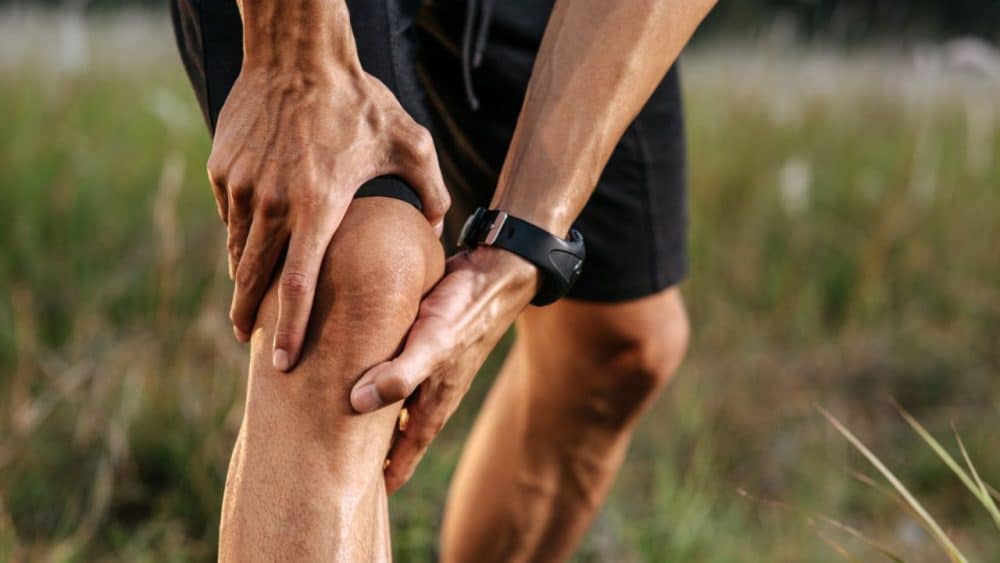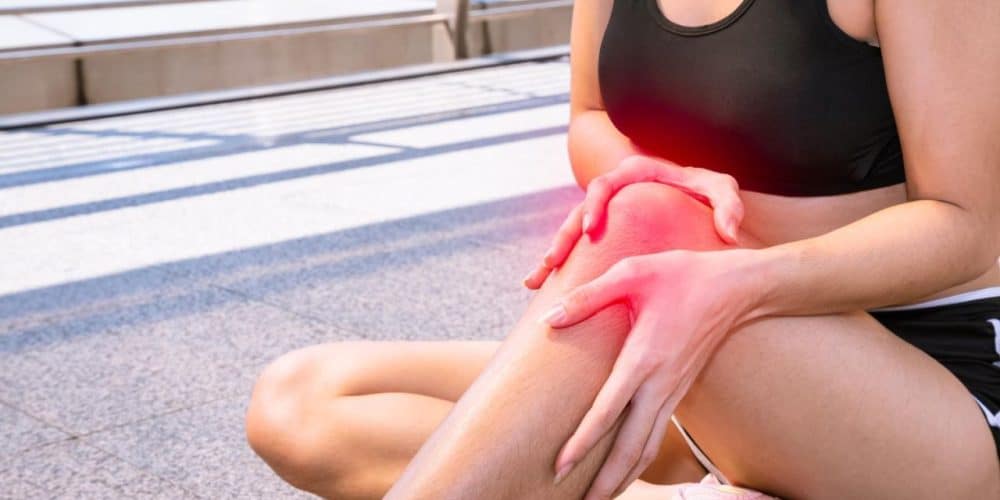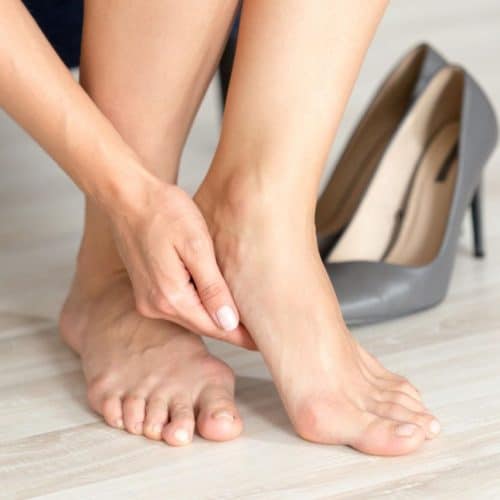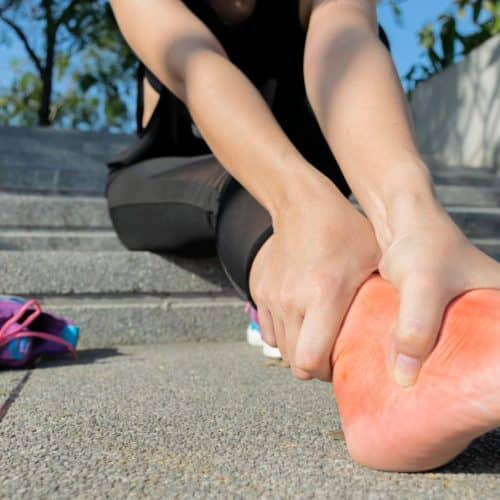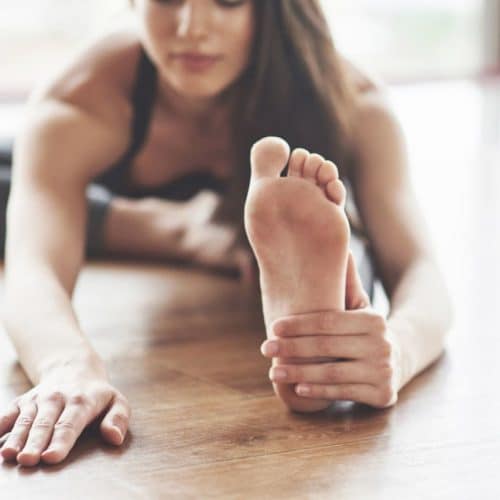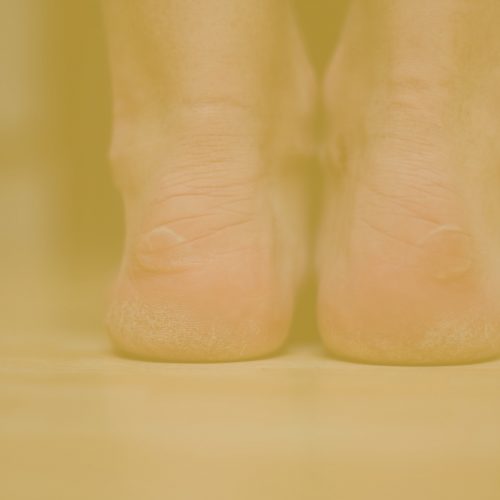Are your knees constantly reminding you of their presence, making every step a painful ordeal? Don’t let knee pain keep you from living your life to the fullest.
Whether it’s an old injury resurfacing or the wear and tear of everyday life, finding effective ways to manage knee pain is crucial. In this article, we delve into the world of physical therapy for knees, exploring actionable strategies to alleviate your discomfort and help you regain your mobility.
Understanding Knee Pain
1. Common Causes of Knee Pain
Knee pain is a prevalent issue that can arise from various factors. One of the most common causes is injury, often stemming from accidents, falls, or sudden impacts. These injuries can lead to issues such as ligament tears, meniscus damage, or fractures. Athletes and individuals involved in physical activities are particularly prone to such injuries.
Osteoarthritis, a degenerative disorder that occurs when the cartilage that normally cushions the knee joint deteriorates over time, is another key factor in developing knee discomfort. This can lead to discomfort, irritation, and reduced range of motion. Rheumatoid arthritis is an autoimmune illness that can potentially affect the knee joint. This can cause the knee to become deformed, resulting in persistent knee discomfort.
Tendinitis, the inflammation of the tendons around the knee joint, contributes to knee pain. This can occur due to overuse, improper technique during exercise, or repetitive motions. The condition can cause discomfort and swelling, particularly during movement.
2. The Impact of Knee Pain on Daily Life
Knee pain can have a profound impact on daily activities and overall well-being. Simple tasks such as walking, climbing stairs, or standing for extended periods can become excruciatingly painful. This limitation in mobility can lead to decreased physical activity, which in turn can contribute to weight gain and a decline in overall health.
Moreover, the emotional toll of knee pain should not be underestimated. Constant pain and limited mobility can lead to frustration, anxiety, and depression. The feeling of losing independence and not being able to engage in activities you once enjoyed can take a toll on your mental health.
The pain can also disrupt your sleep, as finding a comfortable position might be challenging. As a result, fatigue and irritability might become part of your daily life.
The Role of Physical Therapy
1. Benefits of Physical Therapy for Knee Pain
Physical therapy is crucial in addressing knee pain by offering a comprehensive and holistic approach to recovery. Unlike medications that merely mask the pain, physical therapy aims to treat the underlying causes and improve the overall health of your knee joint.
One of the key benefits of physical therapy is that it is non-invasive and promotes natural healing. Through targeted exercises, stretches, and hands-on techniques, physical therapists work to improve joint mobility, strengthen muscles, and reduce pain. This approach provides relief and empowers individuals with the tools they need to manage their pain independently.
2. When to Consider Physical Therapy
It’s essential to consult a physical therapist if you’re experiencing persistent or worsening knee pain. Your therapist will perform a thorough evaluation to determine the root cause of your pain and assess your overall physical condition. Based on this assessment, they will create a personalised treatment plan tailored to your needs.
Physical therapy is beneficial not only for those recovering from injuries but also for individuals with chronic conditions such as arthritis. Even if your pain is mild, seeking early intervention through physical therapy can prevent further deterioration and enhance your overall quality of life.
Exercises for Knee Pain Relief
1. Range of Motion Exercises
Range of motion exercises are essential for maintaining the flexibility and mobility of your knee joint. These exercises aim to improve the full movement of your knee, preventing stiffness and enhancing overall joint function.
- Knee Flexion Stretch: Sit on the edge of a chair with your feet flat on the floor. Slowly lift your affected leg and gently bend your knee, bringing your heel toward your buttocks. Hold the stretch for 15-30 seconds, then lower your leg. Repeat this stretch several times on both legs.
- Knee Extension Stretch: Place a towel roll under your ankle while sitting on a chair. Straighten your knee as much as possible, lifting your foot off the floor. Hold for a few seconds, and then lower your foot. Repeat this movement several times to gradually improve knee extension.
2. Strengthening Exercises
Strengthening the muscles around your knee is crucial for providing support and stability. When these muscles are strong, they help alleviate stress on the joint, reducing pain and promoting better movement.
- Straight Leg Raises: Lie on your back with one leg extended and the other bent at the knee. Tighten your thigh muscles and lift your extended leg off the floor. Hold for a few seconds, then lower it. Perform 10-15 repetitions on each leg.
- Wall Squats: Stand with your back against a wall and your feet shoulder-width apart. Slowly slide down the wall, bending your knees to a 45-degree angle. Hold this position for a few seconds before sliding back up. Repeat this squat 10-15 times.
3. Low-Impact Aerobic Exercises
Engaging in low-impact aerobic exercises is beneficial for increasing blood circulation to the knee joint while minimising stress on the joint itself. These exercises promote cardiovascular health and overall well-being.
- Stationary Cycling: Use a stationary bike to pedal at a comfortable pace. Adjust the resistance level to challenge yourself while avoiding excessive knee strain. Aim for 20-30 minutes of cycling.
- Swimming: Swimming is an excellent full-body exercise that provides a gentle knee workout. The buoyancy of the water reduces the impact on your joints while allowing you to engage in a cardio workout.
- Elliptical Training: If available, use an elliptical machine, which mimics the motion of walking or running without the impact. This low-impact exercise engages multiple muscle groups while being gentle on your knees.
Remember to consult your physical therapist before attempting these exercises, as they can tailor the regimen to your specific needs and monitor your progress. Gradually increasing the intensity and frequency of these exercises will improve knee strength and decrease pain over time.
Creating a Personalised Physical Therapy Plan
1. Assessment by a Professional
When addressing knee pain through physical therapy, a crucial initial step is undergoing a comprehensive assessment by a skilled and experienced physical therapist. This assessment is designed to deeply understand your unique condition, underlying causes, and current physical capabilities.
During the assessment, the physical therapist will thoroughly evaluate your knee joint’s range of motion, strength, flexibility, and overall functionality. They will also discuss your medical history, previous injuries, and lifestyle factors. This holistic approach helps the therapist tailor a personalised treatment plan that suits your needs and goals.
2. Setting Realistic Goals
Collaborating with your physical therapist, you’ll have the opportunity to establish realistic goals for your recovery journey. These goals can range from short-term milestones to long-term achievements, all aimed at improving your knee’s health and functionality. Setting measurable and attainable objectives creates a roadmap for your progress.
For example, if your knee pain prevents you from taking a leisurely walk, a short-term goal might be walking around the block without discomfort. A long-term goal could involve participating in an activity you love, like hiking or dancing, without knee pain hindering your enjoyment.
The therapist will help you break down these goals into manageable steps and provide guidance on how to work towards them gradually. Regular reassessment and adjustments to the plan will ensure you’re making steady progress while avoiding overexertion or setbacks.
3. Holistic Approach to Healing
Your personalised physical therapy plan will encompass a variety of interventions tailored to your needs. These may include exercises, manual therapy techniques, and education on proper body mechanics. The exercises will be carefully selected to address your specific condition, gradually enhancing your knee’s strength, stability, and flexibility.
Manual therapy techniques, such as joint mobilisations and soft tissue manipulation, can provide immediate relief and restore proper joint function. Your physical therapist will also educate you on posture, alignment, and movements that support knee health. This knowledge equips you with tools to make conscious choices in your daily activities to prevent further strain on your knees.
Creating a personalised physical therapy plan is pivotal in alleviating knee pain and regaining a comfortable, active lifestyle. You’re on the path to improved knee health and overall well-being through a thorough assessment, setting achievable goals, and adopting a holistic approach to healing.
Remember, consistency and commitment to your therapy plan, under the guidance of a skilled physical therapist, will lead you to a brighter future free from the limitations of knee pain.
Lifestyle Adjustments for Knee Health
1. Maintaining a Healthy Weight
If you want to safeguard the health of your knees, maintaining a healthy weight and keeping your body fat percentage at a healthy level are both vitally important. Being overweight places additional strain on the knees, which can make preexisting knee pain worse and hasten the breakdown of the cartilage that lines the joint spaces. You may attain and maintain a healthy weight by selecting a diet that is both well-balanced and abundant in nutrients. This will help to alleviate some of the strain that is placed on your knees.
Include foods rich in vitamins, minerals, and antioxidants in your diet to keep your joints in good condition. Omega-3 fatty acids, found in fatty fish such as salmon and other types of fish with a high-fat content, have been demonstrated to help reduce inflammation. In the meantime, calcium and vitamin D are two components that help the maintenance of healthy bones.
Your body can acquire the nutrients it needs for healthy knee function by eating a diet that is abundant in whole grains, proteins that are low in fat, and a broad range of fruits and vegetables.
2. Proper Body Mechanics
Learning and practising proper body mechanics can significantly alleviate knee stress during daily activities. Simple adjustments in how you move can make a significant difference in reducing pain and preventing further damage.
When lifting heavy objects, for instance, bend at your hips and knees rather than your waist to avoid putting unnecessary strain on your knees. Maintain a straight back and engage your core muscles to provide additional support. Use your leg muscles when sitting down or standing up rather than relying solely on your knees.
When climbing stairs, lead with your stronger leg and use the handrail for balance. Distribute your weight evenly between both legs to reduce the knee impact. Practising these small adjustments consistently can create healthier movement patterns that protect your knee joints.
3. Footwear and Orthotics
Wearing appropriate footwear is essential for promoting knee health and preventing pain. Choose shoes with proper arch support and cushioning to absorb shock during activities. Avoid high heels, as they can alter your posture and put undue pressure on the knees.
For individuals with specific knee issues, orthotic inserts prescribed by a podiatrist or orthopedic specialist can provide additional support and alignment. These inserts are designed to correct any structural imbalances in your feet which can impact your knee alignment.
4. Incorporating Physical Activity
While it might seem counterintuitive, staying physically active is essential for knee health. Engaging in regular low-impact exercises can strengthen the muscles around the knee joint, enhancing stability and reducing pain.
Low-impact activities like swimming, cycling, and gentle yoga are excellent options. These exercises provide cardiovascular benefits without subjecting your knees to excessive stress. Gradually increasing the intensity and duration of your workouts under the guidance of a physical therapist can lead to improved knee function over time.
Staying Consistent and Patient
1. Overcoming Challenges
Recovery from knee pain through physical therapy is a journey that comes with its fair share of challenges. There might be days when you feel frustrated, discouraged, or even tempted to give up. Recognising that setbacks are a natural part of the process and shouldn’t deter you from your goals is important.
One common challenge is the feeling of discomfort during exercises. Some movements might initially cause mild discomfort as your muscles and joints adjust to the new routine. However, with guidance from your physical therapist, you can differentiate between productive discomfort and pain that indicates you’re pushing too hard. Communicating openly with your therapist about your experiences ensures that adjustments can be made to your plan to ensure both progress and safety.
2. Celebrating Small Victories
Amidst the challenges, it’s essential to celebrate the small victories along the way. No matter how seemingly insignificant, every step forward is a testament to your determination and hard work. Whether it’s achieving a slightly wider range of motion, completing a set of exercises with less discomfort, or noticing reduced pain during daily activities, these achievements are worth acknowledging.
Consider keeping a journal to track your progress and jot down the triumphs, no matter how minor. Reflecting on these successes can serve as a motivating reminder of how far you’ve come. Additionally, your physical therapist will be there to acknowledge and applaud your accomplishments, offering valuable encouragement and guidance throughout your journey.
3. Mindset and Consistency
Maintaining a positive mindset is a powerful tool throughout your recovery. Consistency and a hopeful outlook will help you stay committed to your physical therapy plan. The journey might not always be linear; progress might have ups and downs, but the key is to keep moving forward.
Consistency is essential in adhering to your exercise regimen and practising healthy habits in your daily life. From maintaining a balanced diet to practising proper body mechanics, each choice contributes to the overall health of your knees. Over time, these choices become second nature, enhancing your knee’s strength and resilience.
Preventive Measures to Avoid Future Knee Pain
1. Warm-Up and Cool-Down Techniques
Before engaging in any physical activity, it’s essential to incorporate proper warm-up and cool-down routines. These techniques prepare your muscles and joints for exercise, reduce the risk of injury, and prevent knee strain.
- Warm-Up: Start with a few minutes of light aerobic activity, such as brisk walking or gentle cycling, to increase blood flow to your muscles. Follow this with dynamic stretches that mimic the movements you’ll be performing during your workout. This gradually prepares your muscles, tendons, and ligaments for the upcoming activity.
- Cool-Down: After exercising, engage in static stretches that target the major muscle groups you used during your workout. Holding each stretch for 15-30 seconds helps relax the muscles and gradually decrease your heart rate. Cooling down also promotes flexibility and prevents stiffness, which can contribute to knee discomfort.
2. Proper Footwear and Equipment
Selecting appropriate footwear and equipment is crucial for maintaining knee health during physical activities. The right gear provides support, cushioning, and stability, reducing the impact on your knees.
- Footwear: Choose shoes with ample arch support and cushioning, especially if you’re engaging in activities that involve impact, such as running or aerobics. The shoes should fit well and provide a snug yet comfortable fit to prevent unnecessary movement and friction.
- Activity-Specific Gear: Consider using protective gear such as knee pads or braces, depending on the activity. These accessories can provide extra support and help prevent undue stress on your knees, particularly during activities that involve kneeling or sudden movements.
3. Cross-Training and Balanced Exercise
Variety is key when it comes to preventing knee pain. A well-rounded exercise routine that includes aerobic activities, strength training, and flexibility exercises helps ensure balanced muscle development and joint stability.
- Cross-Training: Avoid overloading your knees with repetitive motions. Instead, engage in cross-training, which involves alternating between different types of exercises to work for different muscle groups. For instance, if you’re a runner, incorporate swimming or cycling to reduce the impact on your knees.
- Strength Training: Strengthening the muscles around your knees, such as the quadriceps and hamstrings, provides essential support to the joint. Focus on exercises that target these muscle groups, such as leg presses, lunges, and squats, to enhance knee stability.
- Flexibility Exercises: Regularly engage in flexibility exercises, such as yoga or Pilates, to maintain joint mobility and prevent stiffness. These exercises also improve your overall range of motion, reducing the risk of straining your knees during daily activities.
Incorporating preventive measures into your lifestyle is essential for ensuring your knees’ long-term health and well-being. By embracing warm-up and cool-down techniques, selecting proper footwear and equipment, and adopting a well-rounded exercise routine, you’re taking proactive steps to avoid future knee pain.
These measures protect your knees during physical activities and contribute to your overall quality of life by promoting joint health and flexibility. Investing in your knee health today can lead to a pain-free and active future.
Conclusion
In the hustle and bustle of our daily lives, knee pain can be an unwelcome companion. Fortunately, you don’t have to endure it silently. You can find effective ways to manage and alleviate your knee pain right here in Australia through the guidance of qualified physical therapists.
Physical therapy has proven a beacon of hope for countless individuals struggling with knee discomfort, from gentle exercises designed to strengthen the surrounding muscles to personalised treatment plans tailored to your specific condition. By addressing the root causes of your pain, these dedicated professionals can empower you to regain control over your mobility and lead a more active lifestyle.
But remember the journey to pain-free knees requires dedication and consistency. As you embark on this path, always communicate openly with your physical therapist. Their expertise, combined with your commitment, will pave the way to gradual but sustainable improvement.
Ready to bid farewell to knee pain and embrace a life of mobility and comfort? How will you incorporate the insights you’ve gained from this blog into your routine starting today? Share your thoughts below and take the first step towards healthier, happier knees!
Content Summary
- Whether it’s an old injury resurfacing or the wear and tear of everyday life, finding effective ways to manage knee pain is crucial.
- When it comes to knee pain relief, physical therapy emerges as a potent solution.
- With tailored exercises and techniques, physical therapy targets the root causes of your discomfort.
- Knee pain is a prevalent issue that can arise from various factors.
- Knee pain can have a profound impact on daily activities and overall well-being.
- Moreover, the emotional toll of knee pain should not be underestimated.
- Constant pain and limited mobility can lead to frustration, anxiety, and depression.
- Physical therapy is crucial in addressing knee pain by offering a comprehensive and holistic approach to recovery.
- Unlike medications that merely mask the pain, physical therapy aims to treat the underlying causes and improve the overall health of your knee joint.
- One of the key benefits of physical therapy is that it is non-invasive and promotes natural healing.
- It’s essential to consult a physical therapist if you’re experiencing persistent or worsening knee pain.
- Your therapist will perform a thorough evaluation to determine the root cause of your pain and assess your overall physical condition.
- Even if your pain is mild, seeking early intervention through physical therapy can prevent further deterioration and enhance your overall quality of life.
- Range of motion exercises are essential for maintaining the flexibility and mobility of your knee joint.
- Repeat this stretch several times on both legs.
- Repeat this movement several times to gradually improve knee extension.
- Strengthening the muscles around your knee is crucial for providing support and stability.
- Engaging in low-impact aerobic exercises is beneficial for increasing blood circulation to the knee joint while minimising stress on the joint itself.
- Use a stationary bike to pedal at a comfortable pace.
- Aim for 20-30 minutes of cycling.
- Swimming is an excellent full-body exercise that provides a gentle knee workout.
- The buoyancy of the water reduces the impact on your joints while allowing you to engage in a cardio workout.
- When addressing knee pain through physical therapy, a crucial initial step is undergoing a comprehensive assessment by a skilled and experienced physical therapist.
- During the assessment, the physical therapist will thoroughly evaluate your knee joint’s range of motion, strength, flexibility, and overall functionality.
- This holistic approach helps the therapist tailor a personalised treatment plan that suits your needs and goals.
- Collaborating with your physical therapist, you’ll have the opportunity to establish realistic goals for your recovery journey.
- Setting measurable and attainable objectives creates a roadmap for your progress.
- Your personalised physical therapy plan will encompass a variety of interventions tailored to your needs.
- If you want to safeguard the health of your knees, maintaining a healthy weight and keeping your body fat percentage at a healthy level are both vitally important.
- You may attain and maintain a healthy weight by selecting a diet that is both well-balanced and abundant in nutrients.
- Include foods rich in vitamins, minerals, and antioxidants in your diet to keep your joints in good condition.
- Learning and practising proper body mechanics can significantly alleviate knee stress during daily activities.
- Practising these small adjustments consistently can create healthier movement patterns that protect your knee joints.
- Wearing appropriate footwear is essential for promoting knee health and preventing pain.
- Choose shoes with proper arch support and cushioning to absorb shock during activities.
- For individuals with specific knee issues, orthotic inserts prescribed by a podiatrist or orthopedic specialist can provide additional support and alignment.
- These inserts are designed to correct any structural imbalances in your feet which can impact your knee alignment.
- While it might seem counterintuitive, staying physically active is essential for knee health.
- Engaging in regular low-impact exercises can strengthen the muscles around the knee joint, enhancing stability and reducing pain.
- Gradually increasing the intensity and duration of your workouts under the guidance of a physical therapist can lead to improved knee function over time.
- Recovery from knee pain through physical therapy is a journey that comes with its fair share of challenges.
- Recognising that setbacks are a natural part of the process and shouldn’t deter you from your goals is important.
- One common challenge is the feeling of discomfort during exercises.
- However, with guidance from your physical therapist, you can differentiate between productive discomfort and pain that indicates you’re pushing too hard.
- Communicating openly with your therapist about your experiences ensures that adjustments can be made to your plan to ensure both progress and safety.
- Amidst the challenges, it’s essential to celebrate the small victories along the way.
- No matter how seemingly insignificant, every step forward is a testament to your determination and hard work.
- Consider keeping a journal to track your progress and jot down the triumphs, no matter how minor.
- Reflecting on these successes can serve as a motivating reminder of how far you’ve come.
- Maintaining a positive mindset is a powerful tool throughout your recovery.
- Consistency and a hopeful outlook will help you stay committed to your physical therapy plan.
- Consistency is essential in adhering to your exercise regimen and practising healthy habits in your daily life.
- Before engaging in any physical activity, it’s essential to incorporate proper warm-up and cool-down routines.
- These techniques prepare your muscles and joints for exercise, reduce the risk of injury, and prevent knee strain.
- Selecting appropriate footwear and equipment is crucial for maintaining knee health during physical activities.
- The right gear provides support, cushioning, and stability, reducing the impact on your knees.
- Depending on the activity, consider using protective gear such as knee pads or braces.
- Avoid overloading your knees with repetitive motions.
- Instead, engage in cross-training, which involves alternating between different types of exercises to work for different muscle groups.
- Incorporating preventive measures into your lifestyle is essential for ensuring your knees’ long-term health and well-being.
- These measures protect your knees during physical activities and contribute to your overall quality of life by promoting joint health and flexibility.
- Investing in your knee health today can lead to a pain-free and active future.
- You can find effective ways to manage and alleviate knee pain right here in Australia through the guidance of qualified physical therapists.
- By addressing the root causes of your pain, these dedicated professionals can empower you to regain control over your mobility and lead a more active lifestyle.
- But remember the journey to pain-free knees requires dedication and consistency.
- As you embark on this path, always communicate openly with your physical therapist.
- Their expertise, combined with your commitment, will pave the way to gradual but sustainable improvement.
Frequently Asked Questions (FAQs)
1. Is physical therapy painful?
Physical therapy should not be painful. While some exercises might cause mild discomfort, they are designed to improve your condition gradually.
2. Can I do physical therapy at home?
Yes, many physical therapy exercises can be done at home. However, consulting a professional is recommended to ensure you perform them correctly.
3. How long does it take to see results from physical therapy?
The timeline varies based on your condition and commitment. Some individuals experience improvements within a few weeks, while others might take longer.
4. Can I resume sports after physical therapy?
With proper guidance from your physical therapist, you can resume sports gradually. It’s important to avoid overexertion and listen to your body.
5. Is surgery the only solution for knee pain?
Surgery is usually considered when other conservative treatments have failed. Physical therapy offers a non-surgical approach that is effective for many individuals.


